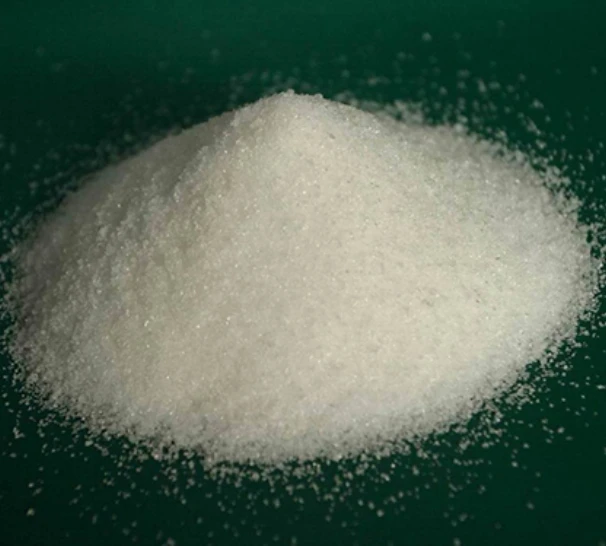Applications and Benefits of Partially Hydrolyzed Polyacrylamide in Various Industries
Introduction to Partially Hydrolysed Polyacrylamide
Partially hydrolysed polyacrylamide (PHPA) is a water-soluble polymer that has gained significant attention in various industrial applications due to its unique properties. Its synthesis involves the hydrolysis of polyacrylamide, resulting in a compound with a higher degree of charge and enhanced viscosity. This article explores the characteristics, synthesis, and applications of PHPA, shedding light on its importance in multiple fields, including agriculture, petroleum, and wastewater treatment.
Properties of Partially Hydrolysed Polyacrylamide
The unique properties of PHPA make it a versatile polymer. It is typically characterized by its high molecular weight, which can range from several hundred thousand to a few million Daltons. The degree of hydrolysis can vary, generally between 5% to 30%, influencing its functionality and suitability for specific applications. The presence of carboxyl functional groups derived from hydrolysis enhances its water retention capability and provides anionic charge, making it an effective flocculant and thickening agent.
PHPA is also relatively stable under a wide range of pH and temperature conditions, which contributes to its adaptability in different environments. Its solubility in water allows for easy processing and application, making it a preferred choice in formulations where aqueous solutions are required. Additionally, PHPA exhibits excellent shear-thinning behavior, which makes it suitable for applications requiring ease of pumping and handling.
Synthesis of Partially Hydrolysed Polyacrylamide
The synthesis of PHPA generally begins with the polymerization of acrylamide monomers. This process can be carried out through various methods, including free radical polymerization. Once the polyacrylamide is synthesized, hydrolysis is performed using either alkaline or acidic conditions. The extent of hydrolysis is carefully controlled to achieve the desired degree of hydrolysis, which directly influences the polymer's properties and performance.
The hydrolysis reaction can be monitored through various analytical techniques, including gel permeation chromatography (GPC), Fourier-transform infrared spectroscopy (FTIR), and nuclear magnetic resonance (NMR). These methods allow for the characterization of the polymer structure and confirmation of the functional groups present, ensuring that the final product meets the required specifications for its intended application.
partially hydrolysed polyacrylamide

Applications of Partially Hydrolysed Polyacrylamide
The applications of PHPA are vast and varied, spanning multiple industries
1. Agriculture In agriculture, PHPA is used as a soil conditioner and a water retention agent. Its ability to enhance soil structure and moisture retention leads to improved crop yields and better soil fertility. PHPA helps reduce water evaporation, allowing farmers to optimize irrigation practices and conserve resources.
2. Petroleum Industry PHPA is widely utilized as a viscosifier in drilling fluids. Its ability to increase the viscosity of water-based muds is essential for effective drilling operations, providing better control of the borehole environment and reducing the risk of drilling fluid loss. Additionally, PHPA aids in stabilizing the bed of sediment and preventing the formation of borehole collapses.
3. Wastewater Treatment In wastewater treatment processes, PHPA serves as a flocculant to enhance the aggregation of suspended particles, facilitating their removal. This application is particularly beneficial in municipal and industrial wastewater processes, leading to cleaner water discharge into the environment.
4. Cosmetics and Personal Care In the cosmetic industry, PHPA is used as a thickening agent in formulations such as lotions, shampoos, and conditioners. Its ability to provide a smooth texture and improve the stability of emulsions is invaluable in product formulation.
Conclusion
Partially hydrolysed polyacrylamide is a remarkable polymer that plays a critical role in various industrial applications. Its unique properties, including high viscosity, water solubility, and excellent shear-thinning behavior, make it indispensable in agriculture, the petroleum industry, wastewater treatment, and cosmetics. As research continues to explore the potential of PHPA, its applications may expand further, promising enhanced efficiency and sustainability in multiple sectors. The future of PHPA looks bright, with ongoing innovations aimed at maximizing its benefits while minimizing environmental impacts.
-
Pbtc Scale InhibitorPBTC: A Scale Protector for Industrial Water TreatmentNewsAug.05,2025
-
Organic Phosphonate: An Efficient Defender in the Field of Scale InhibitionNewsAug.05,2025
-
Hydrolyzed Polymaleic Anhydride: Green Pioneer in Scale Inhibition FieldNewsAug.05,2025
-
PAPEMP Polyamino Polyether Methylene Phosphonic Acid For SaleNewsAug.05,2025
-
Flocculant Water Treatment: A Pioneer in Purification in the Field of Water TreatmentNewsAug.05,2025
-
Benzyl Isothiazolinone: An Efficient and Broad-Spectrum Antibacterial Protective GuardNewsAug.05,2025





